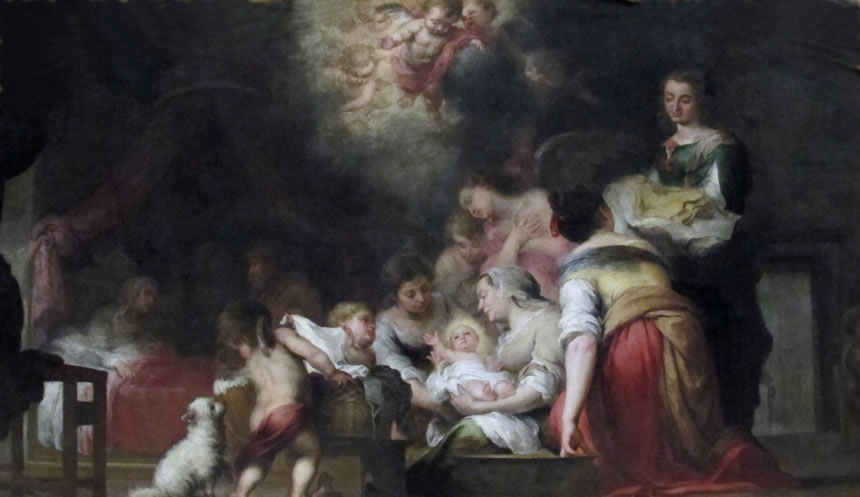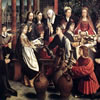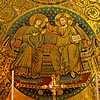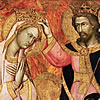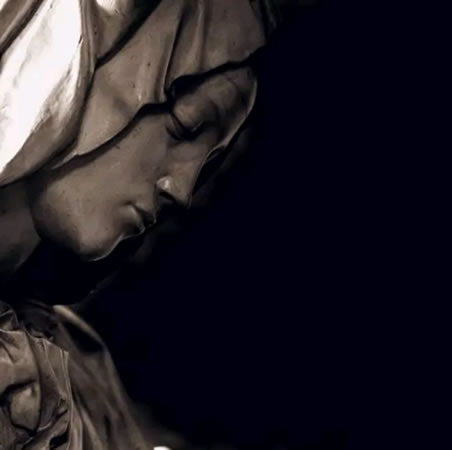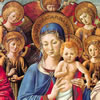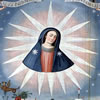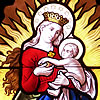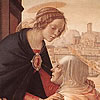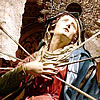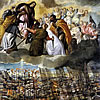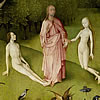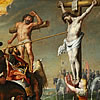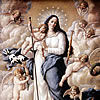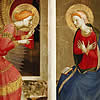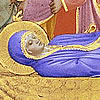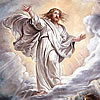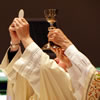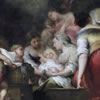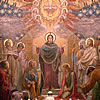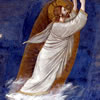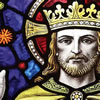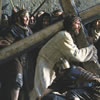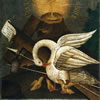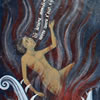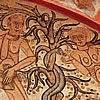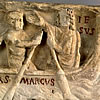Mary’s Nativity: Hinge of Scripture and Salvation History
Christian Sacred Scripture is divided into two major sections: the Old Testament, and the New Testament. In the Christian point-of-view, the Old Testament is a story of God’s search for humankind’s return. In that story, God promises a king, a shepherd, and a new covenant for his people. The prophecies, psalms, and other Old Testament books point to Christ in symbolic or typological ways who will fulfill this promise.
As if to create anticipation, God did not send any prophets after Malachi for almost five hundred years. After thousands of years of constant prophesy, suddenly there is a dearth; the Jews must have felt God had forgotten them.
But the Jews hung on with hope to Malachi’s words: “Now I am sending to you Elijah the prophet,” (Malachi 3:23) which Christ would, later on, interpret to his inner circle that it pertains to John the Baptist. (Matthew 17:9-13 for instance.)
They also held on to the promise of Daniel’s words that foretold of everlasting justice in the holy city after “seventy weeks of years.” (Daniel 9) If they counted the number of years from the time of Daniel, it would fall around the time St. John the Baptist started baptizing in the Jordan. No wonder the Gospel of Luke tells us that the faithful were “full of expectation.” (Luke 3:15). After five hundred years, they have a prophet. God had not forgotten them!
There was no New Testament around that particular time so they didn’t even know the Messiah who would be king, good shepherd, and make a new covenant, had already been born. All they know was the man baptizing in the Jordan was a portent of something good to come.
Since the Gospels tell us the story of the New Testament in somewhat chronological order, we who live in this century know about the Annunciation and the Nativity of Christ. For example, when we follow the Gospels of Matthew and Luke, we read of the Infancy Narratives. After five hundred years of “silence” from God, all of a sudden things are abuzz. Angels are delivering messages; barren women are again giving birth. There is something new… God is about to walk with humankind again as he did in the Garden of Eden.
But it seems there are “missing pages” in between the Old Testament and the New Testament. What happened in between? This “space” is where we put the Nativity of Mary. If the Old Testament and New Testament are separate sections of the Bible, Mary’s birth is the hinge that connects the two.
The Church Father, Tertullian said that if Eve came from the Adam, to reverse the effects of the fall, it is just proper that the New Adam should come from the New Eve. And in this logic, the woman, Mary must come before Christ.
Her arrival is the first glimmer of light, which preannounces the arrival of Christ – the Light of the world. This is why we call Mary the Morning Star, for she is like Venus, the brightest “star” in the dawn sky that always appears first before sunrise.
Her birth, therefore, is “origo mundi melioris” – the beginning of a better world. In the liturgy, we express this in an antiphon: “Your birth, O Virgin Mother of God, proclaims joy to the whole world, for from you arose the glorious Sun of Justice, Christ our God; He freed us from the age-old curse and filled us with holiness; he destroyed death and gave us eternal life.”
With all of this in mind, the Nativity of Mary is no ordinary birthday celebration. Instead of singing “happy birthday,” the Church sings of how the world is about to be so much better with her birth, not for her own sake, but because she will bring forth Christ who is our ultimate joy. And so we implore her through her titles: Morning Star, pray for us. Cause of our Joy, pray for us.
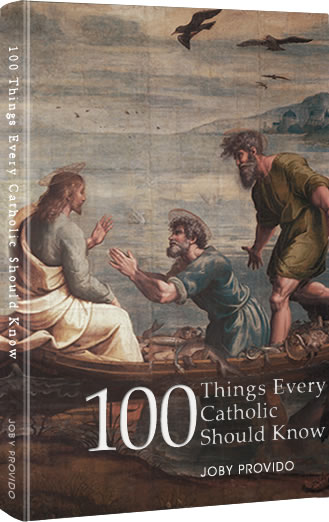
100 Things Every Catholic Should Know
Whether or not you are new to the Catholic Church, or struggling, or lapsed, or dynamically involved, this book will enlighten you with the essentials of the Faith that have been handed down to us by the apostles.
Each of the 100 topics is easy to read and distilled into bite-sized portions. Through cross-referencing, the book also shows how the topics are interrelated. Those who are new to the Faith will find this book an edifying handy reference, and those who have simply forgotten will find it a great review material that might spark a new love for God and religion.
Get your copy now either in Hardbound, Paperback, or Kindle
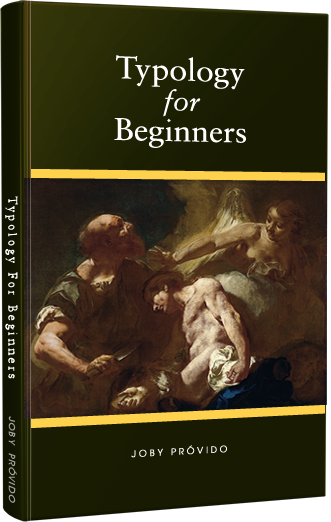
Typology for Beginners
A Catholic Perspective on understanding the New Testament through the Old Testament
First-century Jews converted to Christianity in droves because of the way the New Testament was written to show Jesus was the Messiah promised by the Old Testament. We also learn about how Mary is the New Eve and the Ark of the Covenant in the way the writers portray her.
Through typology, the patterns that connect the Old and New Testaments make the Bible stories more accessible so that one becomes excited to read Sacred Scripture again.
Get your copy now either in Hardbound, Paperback, or Kindle
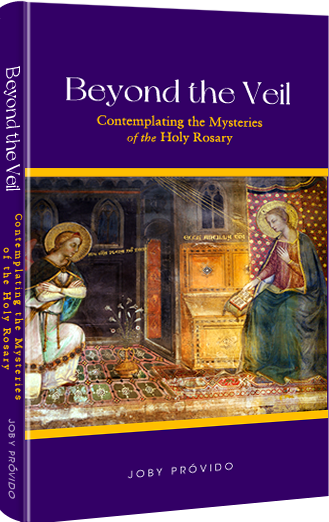
Beyond the Veil
Contemplating the Mysteries of the Holy Rosary
Prayer giants like Pope St. John Paul II, Pope Paul VI, Bl. Archbishop Fulton Sheen, and Bishop Robert Baron advocate that we contemplate on the mysteries of the rosary while we say the vocal prayers. Unfortunately, there are not many books that teach us how to do this. Beyond the Veil comes to the rescue by suggesting seven ways we can pray the rosary the way it was intended.
The larger part of the book offers mental images for each of the mysteries we can use in our contemplation, for how can we imagine the scenes in the rosary if we don't know about them?
Get your copy now either in Hardbound, Paperback, or Kindle

A Sky Full of Stars
Know Our Lady through her Titles in the Litany
The Church helps us understand who Mary is by honoring her with different titles in the Litany of the Blessed Virgin Mary. Unfortunately, over time and difference of culture, we might not grasp what it is the Church is ascribing to her and lose that opportinity to get to know her.
In A Sky Full of Stars, each title of the Litany is explained so we get know Mary more and fall in love with her all over again.
Get your copy now either in Hardbound, Paperback, or Kindle


